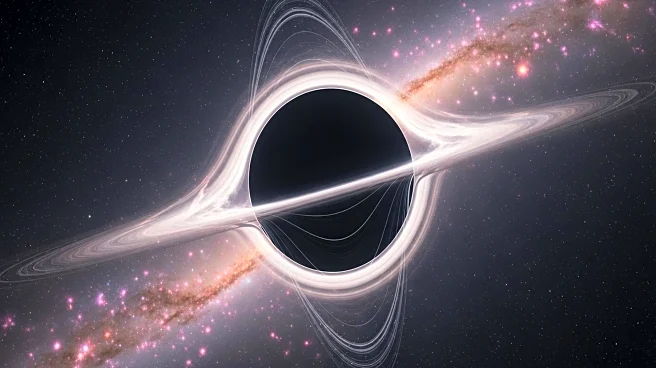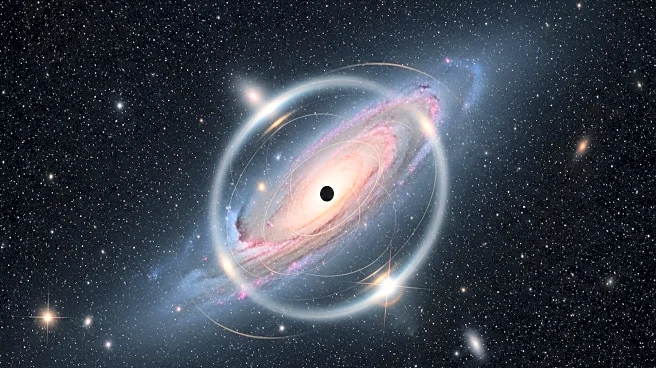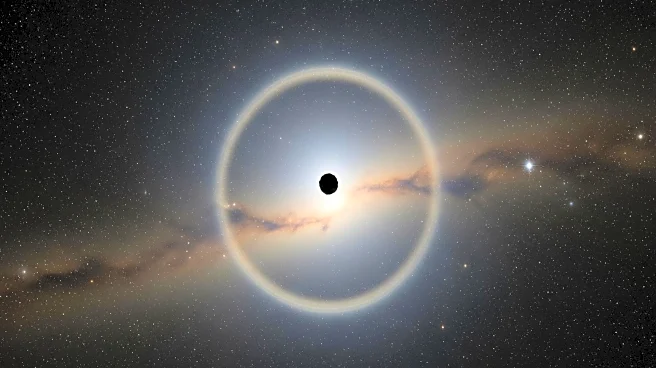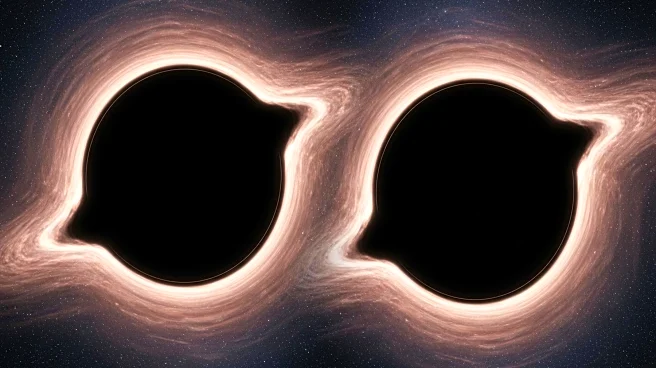What's Happening?
Astronomers have identified the smallest dark object ever detected in the universe, weighing about one million times as much as the Sun. This discovery was made using a global network of telescopes, including the Green Bank Telescope in West Virginia and the Very Long Baseline Array in Hawai'i. The object was detected through gravitational lensing, where its gravitational pull distorts light from other celestial bodies. This finding is significant as it could be a dense clump of dark matter or an inactive dwarf galaxy, challenging existing theories about dark matter. The research, published in Nature Astronomy and the Monthly Notices of the Royal Astronomical Society, aims to understand the nature of dark matter, which is believed to constitute roughly one-quarter of the universe.
Why It's Important?
The discovery of this small dark object is crucial for advancing our understanding of dark matter, a mysterious substance that influences the structure and formation of galaxies. Identifying such low-mass objects could either support or challenge current theories about dark matter's ability to form small, starless clumps. This has implications for the 'cold dark matter theory,' which underpins much of our understanding of galaxy formation. The ability to detect such objects using gravitational lensing opens new avenues for exploring the universe's hidden mass, potentially leading to breakthroughs in astrophysics and cosmology.
What's Next?
Researchers are continuing to analyze data to better understand the nature of the detected dark object and are searching for more similar objects in other parts of the sky. The findings could lead to a reevaluation of existing models of dark matter distribution and its role in cosmic structure formation. Future studies may focus on refining detection techniques and expanding the search for other low-mass dark objects, which could provide further insights into the composition and behavior of dark matter.
Beyond the Headlines
The detection of such a small dark object raises questions about the ethical and philosophical implications of understanding the universe's unseen components. As scientists delve deeper into the mysteries of dark matter, they confront the limits of human knowledge and the potential for new scientific paradigms. This discovery also highlights the collaborative nature of global scientific research, involving institutions across multiple continents.











